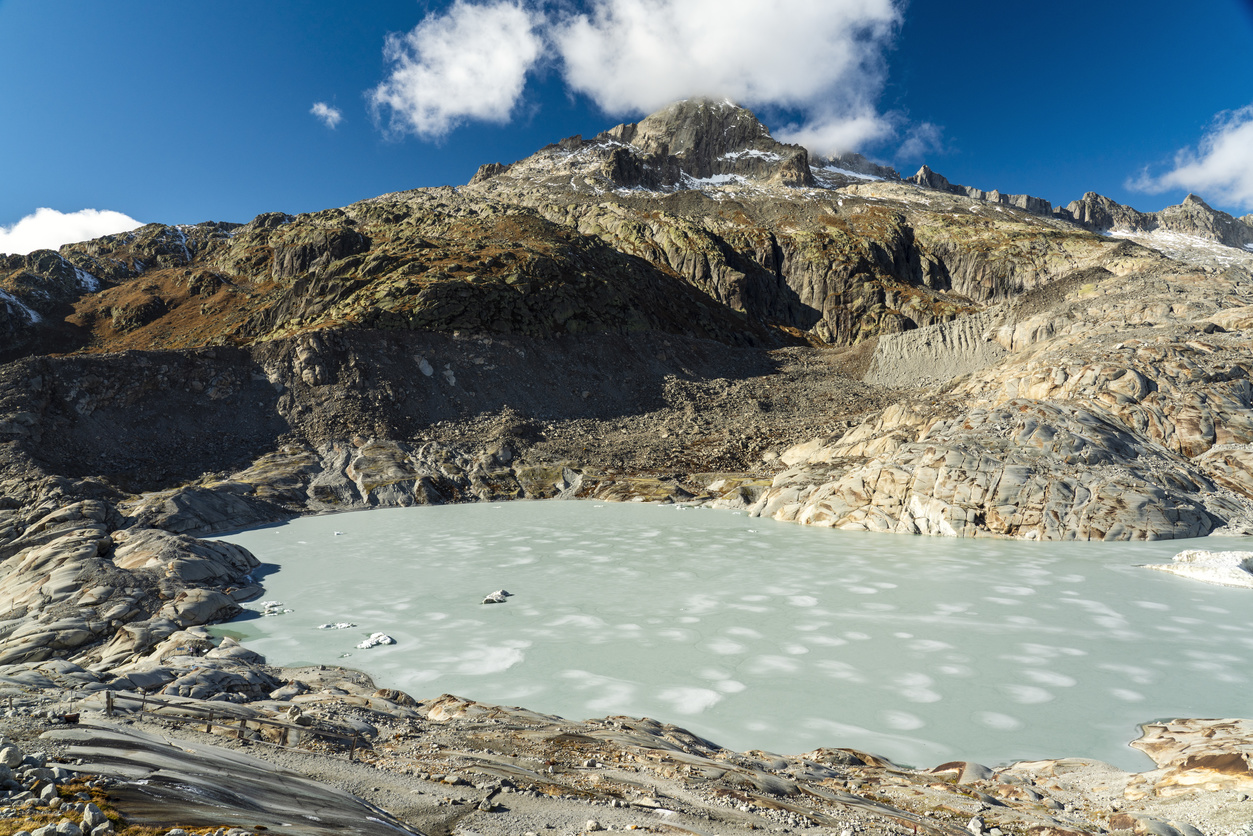
A stroll through Ticino – 240 million years ago

For unsuspecting visitors to Monte San Giorgio at the southern-most tip of Switzerland, there is little evidence - on the surface at least - of the tropical region it once was, or the great sea that it bordered on.
People come to Monte San Giorgio to admire the well-preserved villages clinging to the mountainsides, walk through the verdant forests or stay at a modern health spa overlooking Lake Lugano.
The English-language brochure to the local sites says the picturesque village of Meride on Monte San Giorgio’s southern slope, is “surrounded by fertile fields and vineyards, in a pleasant location…”
There is only a brief mention of Meride’s fossil museum, which is said to be “very interesting”, without going into detail.
Key to Triassic period
In reality, the museum is the starting point for a journey more than 200 million years back in time, since Monte San Giorgio is recognised by palaeontologists as holding the key to the Middle Triassic period of prehistory.
“We have these very beautiful, complete and well preserved fossils from 240 million years ago. That’s unique in the world,” says Heinz Furrer of Zurich’s Palaeontological Institute and leader of the current excavations. “It’s the only place where fish fossils and reptile fossils from this period have been found.”
To journey back to the Triassic period, Furrer says comparisons can be drawn between the area that is now southern Switzerland and the Bahamas. Time travellers, he explains, would be able to stand on a white sandy beach and see smoke rising from distant volcanoes. There would be coral in the sea, lots of prehistoric fish, long-necked reptiles and turtle-like creatures.
And the area at the centre of the excavations would have been a sea basin, between 50 and 100 metres deep. Furrer says the conditions in the bottom half didn’t support any life forms so that the carcasses of animals, having fallen to the floor, were not preyed upon – ensuring their excellent preservation.
19th century mines
The fossils first came to light in the latter half of the 19th century when mines were dug on the Italian side of Monte San Giorgio to extract oil from bituminous shale to light the street lamps of Milan.
The oil shale was also exploited to produce a salve used for skin inflammations and joint diseases. The factory where the salve was made still stands outside Meride but has been converted into a cultural centre.
“One could say that the factory is an interesting remnant of industrial archaeology,” says Markus Felber, the Ticino scientist who is heading efforts to have Monte San Giorgio declared a Unesco World Heritage Site because of the importance of its fossils.
“One could make a simplification and say that mining came first, enabling the scientific excavations to take place. But the research is the only work of importance today,” Felber adds.
The nature trail winds for seven kilometres around Monte San Giorgio. It’s used by the mainly German-speaking guests at a health spa, which attracts visitors as much for its spectacular location above Lake Lugano as for its therapies.
Unmarked limestone quarry
The guests trample through the dead leaves littering the path, stopping now and again to try and decipher the Italian signs explaining Monte San Giorgio’s rich flora and fauna. The trail also takes them past a small, unmarked limestone quarry – site of Furrer’s current excavations – which is easy to overlook since it lies abandoned most of the year.
Only the piles of discarded and brittle limestone plates attest to the painstaking work of the palaeontologist, which Furrer compares to deciphering the clues in a mystery novel. “We started at the upper part and took away every 10 millimetres of limestone, removing it as one would open a book,” he explains.
“Every plate is a page representing a different period. Every time we dig deeper, we open a new page, and hope to see another story or another period documented in this fossilised book of the history of time.”
The most impressive fossils ever found at Monte San Giorgio are of a two-and-a-half-metre-long reptile called the Ceresiosaurus, housed in the Palaeontological Museum at the University of Zurich, and a paddle-like limb of an ichthyosaur, discovered by a young zoologist, Bernhard Peyer, in 1919.
“Peyer was told that here in Monte San Giorgio, invertebrates, particularly large ones, were to be found,” says Felber. “He found that first important fossil at the small oil factory [for salve production], which was the beginning of the scientific work on Monte San Giorgio.”
The citizens of Meride honoured Peyer by renaming their main street after him, and some of the local men formerly employed at the mines and factories made the easy transition to working at the excavations for Peyer and his successors.
Unlike Peyer, Furrer is concentrating his search on less spectacular but equally important fossils. “We are now studying the whole section of beds,” he says.
“We are looking for very tiny fossils like very rare clams or snail shells. We have found the remains of shrimps and algae in the same sediment as the skeletons of reptiles.
“With these discoveries we can reconstruct the fossil environment, because it’s part of our aim to understand the ecology of this basin 240 million years ago.”
by Dale Bechtel

In compliance with the JTI standards
More: SWI swissinfo.ch certified by the Journalism Trust Initiative




































You can find an overview of ongoing debates with our journalists here . Please join us!
If you want to start a conversation about a topic raised in this article or want to report factual errors, email us at english@swissinfo.ch.